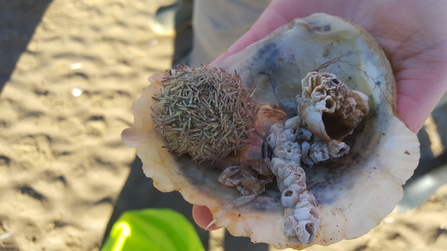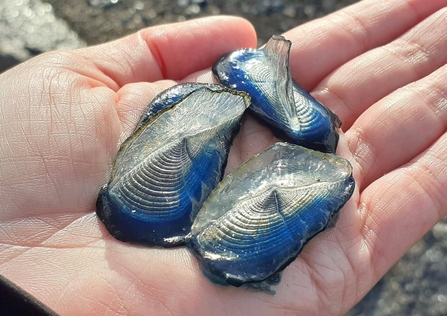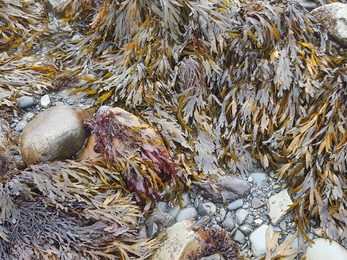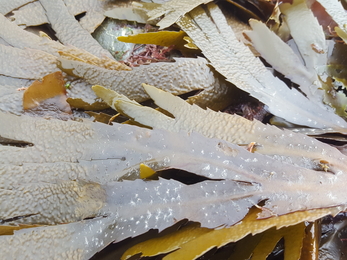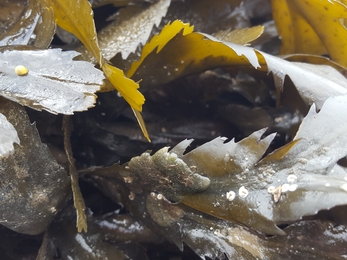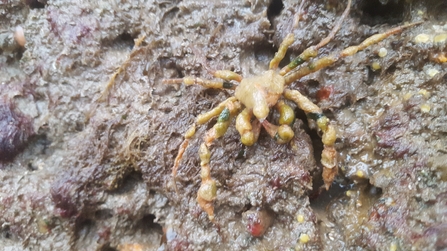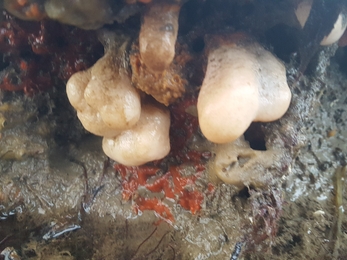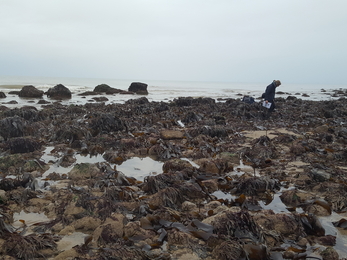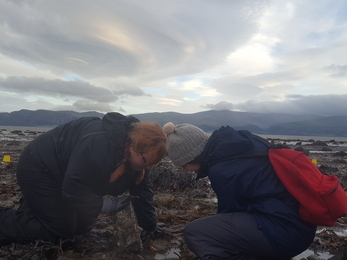In October the shores visited were, Llandudno North shore east (Creigiau Rhiwledyn/Little Orme’s Head SSSI), Penmon area shore (Glannau Penmon - Biwmares SSSI and Y Fenai a Bae Conwy / Menai Strait and Conwy Bay SAC ) and Cricieth (Glanllynnau a Glannau Pen-y-chain i Gricieth SSSI and Pen Llyn A’r Sarnau SAC) and we aimed to carry out a public have-a-go session at Porth Eirias, but instead did an ad hoc Beached! – type search of the various strandlines and shore areas. We also headed to almost both reaches of the NWWT marine team’s remit to do some on-shore Beached! training at Talacre, Flintshire and Tywyn, Gwynedd.
We carried out Walkover Surveys and Timed Species Searches this series of surveys. Number of volunteers overall – 8
Walkover Survey area sampled – 276m2 of the low shore.
Timed species searches – looking for Slipper limpet 30mins; Pacific Oyster 50mins


